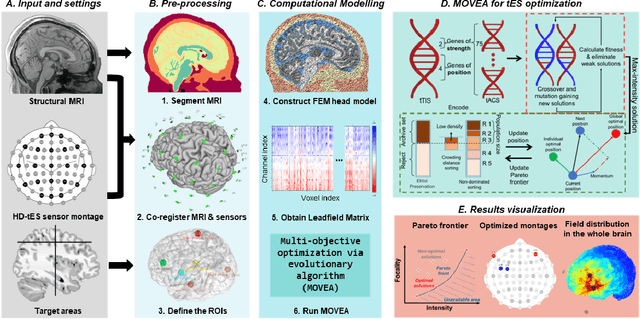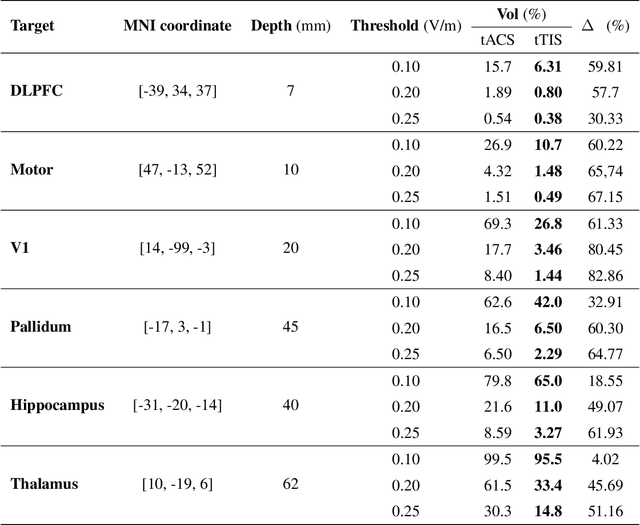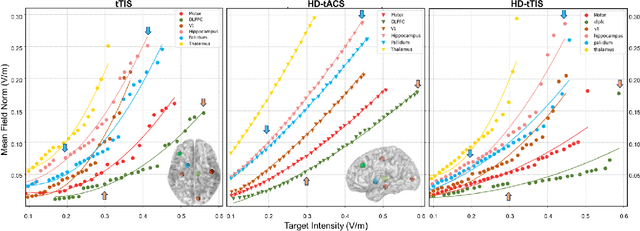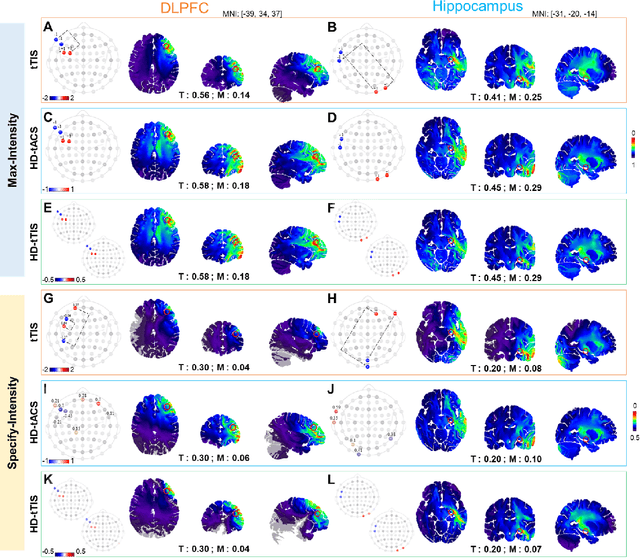Multi-objective optimization via evolutionary algorithm (MOVEA) for high-definition transcranial electrical stimulation of the human brain
Paper and Code
Nov 10, 2022



Transcranial temporal interference stimulation (tTIS) has been reported to be effective in stimulating deep brain structures in experimental studies. However, a computational framework for optimizing the tTIS strategy and simulating the impact of tTIS on the brain is still lacking, as previous methods rely on predefined parameters and hardly adapt to additional constraints. Here, we propose a general framework, namely multi-objective optimization via evolutionary algorithm (MOVEA), to solve the nonconvex optimization problem for various stimulation techniques, including tTIS and transcranial alternating current stimulation (tACS). By optimizing the electrode montage in a two-stage structure, MOVEA can be compatible with additional constraints (e.g., the number of electrodes, additional avoidance regions), and MOVEA can accelerate to obtain the Pareto fronts. These Pareto fronts consist of a set of optimal solutions under different requirements, suggesting a trade-off relationship between conflicting objectives, such as intensity and focality. Based on MOVEA, we make comprehensive comparisons between tACS and tTIS in terms of intensity, focality and maneuverability for targets of different depths. Our results show that although the tTIS can only obtain a relatively low maximum achievable electric field strength, for example, the maximum intensity of motor area under tTIS is 0.42V /m, while 0.51V /m under tACS, it helps improve the focality by reducing 60% activated volume outside the target. We further perform ANOVA on the stimulation results of eight subjects with tACS and tTIS. Despite the individual differences in head models, our results suggest that tACS has a greater intensity and tTIS has a higher focality. These findings provide guidance on the choice between tACS and tTIS and indicate a great potential in tTIS-based personalized neuromodulation. Code will be released soon.
 Add to Chrome
Add to Chrome Add to Firefox
Add to Firefox Add to Edge
Add to Edge